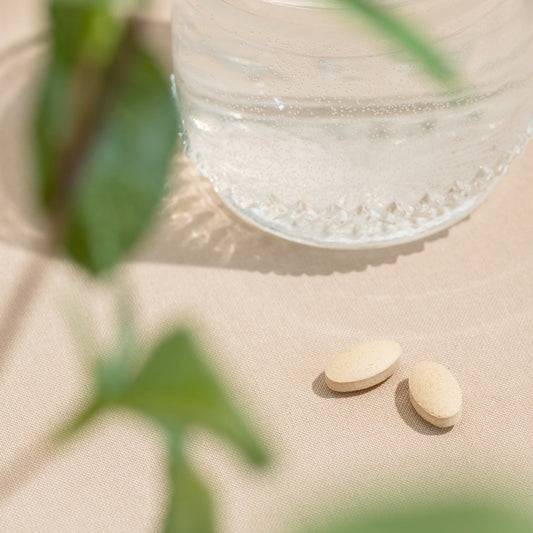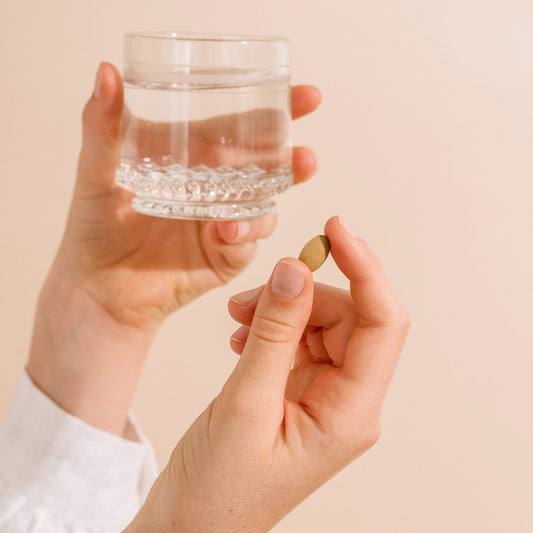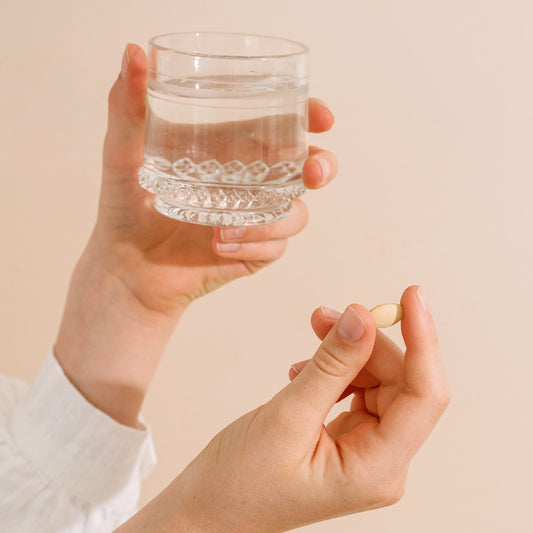Ayurveda is one of the most ancient and comprehensive systems of health care known to humanity. It is truly a science of life that tells us how to improve the quality and length of human life.
There is a special branch of treatment within Ayurveda called rasayana, or rejuvenation, which promotes longevity.
When we use the word longevity in the West, we generally mean extending life, growing old gracefully, and staying healthy. We often measure longevity in terms of years lived—80, 90, or 100 years.
To reach this goal, there may be rigid diets to follow and many herbs and supplements to swallow. Stress management techniques, exercise, and yoga are surely a part of the current longevity mix. However, while most people feel better following this path, few are able to stick with it for long because of its restrictive and time-intensive nature.
When we use the word longevity in Ayurveda, we hold a larger vision—life extension is merely a side benefit of the greater goal of fully ENJOYING life.
Rather than simply adding a few good years, the Ayurvedic way of life aims to support full human potential and to enable a life lived with intention, purpose, and joy.
Regaining Youthfulness
Ayurveda teaches that if life is lived in accordance with prakriti, your individual body-mind constitution, then a natural youthfulness is maintained throughout your life. Rejuvenation is essential to your vitality, creativity, happiness, and inner growth.
When we look at anti-aging and longevity in Ayurveda, we are considering techniques that will restore the memory of consciousness into every cell of the body, which requires both purification and rejuvenation.
The resulting experience—much like an atom, a hurricane, or a solar system—is calm and silent on the inside and incredibly powerful on the outside.
Stress, which triggers the production of degenerative fight or flight hormones and free radicals, literally strips the vital essence out of our cells and robs us of our longevity.
As an antidote, Ayurveda recommends using various foods, lifestyle practices, and Mother Nature's gift of herbs for energy to replenish our cells and restore our innate vitality.
How Rasayanas Work
Rasayanas are employed in Ayurveda to enhance the quality of life, not necessarily the quantity of life—though these often go hand-in-hand. And interestingly, they are only effective when our behavior is equally uplifting, our lifestyle is in harmony with nature, and the food and air we take in is full of prana.
Rasayana therapy can be given to healthy individuals to improve tissues and maintain health, as well as to those experiencing imbalance by supporting better immune resistance.
The first component to any effective rasayana therapy is purification of the body and channels through a series of body purification techniques. Afterward, herbal formulations are administered to support rejuvenation.
There are many types of rasayana therapies and innumerable herbal combinations according to the specific need of the individual. These can be administered to a person of any age and gender under the supervision of an Ayurvedic physician.
Modern advancement in biological understanding has enabled us to assess the effects of rasayana therapy at a cellular level.
It has been observed that traditional rasayana herbs like shatavari and ashwagandha support cellular integrity and protection.1 Ashwagandha, gotu kola, tulsi, and many other herbs have shown adaptogenic activity—meaning they intelligently adapt to the individual's needs.2
Thanks to these findings, the use of rasayana therapy and herbal adaptogens may revolutionize the approach towards management of lifestyle and age-related imbalances.
Effects of Rasayana Therapy
Ayurveda has described the effects of rasayana therapy as follows:
- Provides optimum nourishment to all tissues
- Results in longevity
- Supports the intellect and improves the memory
- Promotes general health and immunity
- Improves skin radiance
- Strengthens the sense organs
- Improves virility and vitality

Herbs for Rejuvenation
Now that you have a good understanding of the meaning and purpose of rasayana, we will look at some of the most potent, well-known herbs for rejuvenation.
Herbs are revered in Ayurveda as well as many indigenous cultures for their tremendous healing capacity—providing essential phytonutrients, antioxidants, vitamins, and minerals to support the strength and vitality of the body and mind.
Adaptogenic herbs in particular are so intelligent that they know exactly where to go and how to work, according to the body's most pressing needs.
This includes support for all seven layers of our tissues, or dhatus—rasa (plasma), rakta (blood), mamsa (muscle), meda (fat), asthi (bone), majja (nerve endings), and shukra or artava (reproductive fluids). As a result, these herbs can provide deep nourishment and renewal for the full body.
Here are seven of the top rasayana herbs, one for each dhatu, according to Ayurveda:
1. Haritaki
Latin name: Terminalia chebula
Tissue layer: Rasa dhatu
Haritaki works on all three doshas—vata, pitta, and kapha, and particularly on vata. It has five of the six tastes (all except salty). This is the fruit that the Medicine Buddha holds in his hands while meditating.
- Har means “to purify.” It clears the malas (wastes) from the tissues and helps cleanse the intestines, thereby acting as a rejuvenator.
- Useful in working with neuromuscular weakness and diminished vision.
- Promotes abdominal comfort, a healthy digestive environment, and healthy elimination.
- Supports the healthy function of the liver and kidneys.
- Bolsters heart health and protects against blood disorders.
2. Guduchi
Latin name: Tinospora cordifolia
Tissue layer: Rakta dhatu
Guduchi means "protector of the body." It also goes by the name Amrita, meaning “the herb for immortality.” Good for all three doshas, it has a bitter taste, hence it is called tikta rasayani.
- One of the best restorative, immune-boosting herbs.
- Reduces ama (toxins) and removes impurities from the body.
- Helps support a normal body temperature and reduce excess pitta in the system.
- Promotes a healthy inflammatory response and comfortable joints.
- Supports liver purification by cleansing the blood and promotes a healthy, clear complexion.
- Restores and kindles the dhatu agni.
3. Amla
Latin name: Embelica officinalis
Tissue Layer: Mamsa dhatu
The A in amalaki translates to “no” and mala means “impurities,” describing this herb's power to clear and remove toxins from the body. Amalaki is an excellent ally for pitta dosha and contains five of the six tastes (all except salty).
- Destroys ama or toxins in the body and keeps you healthy and young.
- Strengthens the nervous system, bone marrow, and sense organs.
- As a brain tonic, improves memory and balances vitiated sadhaka pitta.
- Helpful for balanced elimination and comfortable digestion.
- Supports the health of the liver, eyes, and uterus.
- Rasayana for all dhatus, or bodily tissues.
- Supports muscle tissue by improving neuromuscular strength and flexibility.
4. Kumari/Aloe Vera
Latin name: Aloe barbadensis
Tissue Layer: Meda dhatu
Kumari is often translated to “maiden” or “young girl” (it's called this because the plant looks young even when it grows old). This cooling, fluid-rich plant calms and balances pitta.
- Promotes balance during menstruation, relieving occasional menstrual cramps and PMS.
- Supports those who are going through menopause.
- Promotes the flow of blood to the uterus and supports smooth menstruation.
- A bitter tonic for the digestive system, increasing secretions for a mild laxative effect.
- Helps cool and purify the blood.
- Supports the health and youthfulness of the skin and hair.
- Boosts metabolism and reduces excess fat tissue with a mild scraping action.
- Relieves non-cystic acne and cools red or bloodshot eyes.
5. Guggulu
Latin name: Commiphora mukul
Tissue layer: Asthi dhatu
Guggulu, or guggul, means “helping all kinds of imbalances.” Guggulu is a resinous substance with a powerful scraping action that balances all three doshas.
- Useful in promoting joint comfort and reducing cracking in the joints.
- Helps maintain bone health and balanced porosity in old age.
- Useful in detoxification as well as rejuvenation.
- Kindles agni, scrapes excess fat, and supports weight loss.
- Excellent for blood purification.
- Supports healthy lipids and cholesterol levels already within the normal range.
6. Gotu Kola
Latin name: Centella asiatica
Tissue layer: Majja dhatu
Gotu kola is also commonly referred to as brahmi. Brahmi is a Sanskrit word that comes from the root Brahma—creator of the universe. Brahmi means “that which gives us knowledge and makes us intelligent.”
- An incredibly valuable plant for the brain and entire nervous system.
- As a brain tonic, it enhances intelligence, cognition, and memory.
- Helps build focus, concentration, and mental acuity.
- Promotes awareness and relaxes the mind and nervous system.
- Supports a good night's sleep, especially for those with racing minds.
7. Ashwagandha
Latin name: Withania somnifera
Tissue layer: Shukra dhatu
Reputed for having the “strength of ten horses,” ashwagandha is well-known for its building, strengthening, and rejuvenating properties. Warming and grounding, ashwagandha is best for vata dosha.
- Supports sound sleep and a relaxed nervous system.
- Helps the body cope with external changes in environment and internal moods.
- Supports healthy adrenal function and helps reduce stress and fatigue.
- Improves energy and promotes a general sense of well-being.
- Enhances sexual potency.
- Supports strong, healthy tissues as the body ages.
- Promotes a healthy, robust immune system.
These seven rejuvenating herbal allies are just a taste of the vast world of Ayurvedic herbs. As you explore what these powerful plants have to offer, notice which ones call to you most and experiment with adding just one or two at a time.
When considering the use of herbs, we always recommend consulting your doctor or Ayurvedic practitioner regarding the usage and dosage that is most appropriate for you.












